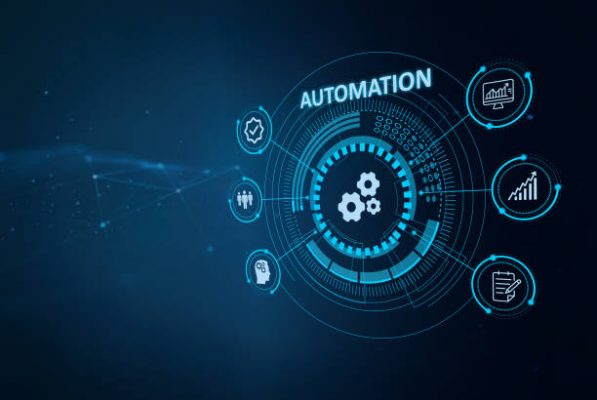
- May 14 2025
- SFI Solution Team
Automating HR Systems to Streamline Employee Experiences
In the current rapidly evolving digital economy, companies face the challenge of staying adaptable, cost-effective, and focused on their workforce. A primary catalyst for this change is the automation of Human Resources — leveraging technology to refine and improve HR processes. By automating routine and administrative HR functions, organizations can greatly improve the employee experience, minimize manual errors, and foster a more efficient workplace.
This article examines the transformative impact of HR system automation on the employee lifecycle — from hiring to retirement — and discusses how your organization can gain advantages by adopting HR technology solutions.
Why Automate HR Processes?
HR departments handle a multitude of complex responsibilities — onboarding, payroll, benefits administration, compliance, employee engagement, performance management, and more. Many of these tasks are repetitive and time-consuming, taking valuable hours away from strategic HR initiatives.
Key Benefits of HR Automation
1. Improved Efficiency and Productivity
Automating HR processes reduces manual workload and allows HR professionals to focus on high-value tasks like talent development and strategic planning.
2. Enhanced Employee Experience
Self-service portals, automated communication, and streamlined onboarding processes help employees access what they need quickly, increasing satisfaction and engagement.
3. Cost Savings
Automation minimizes the need for paper-based processes and redundant data entry, which can significantly reduce administrative overhead.
4. Data Accuracy and Compliance
Automated systems reduce human error and help maintain accurate records, essential for legal compliance and data-driven decision-making.
5. Scalability
As organizations grow, automated systems can scale accordingly without the need to proportionally increase HR headcount.
Core HR Functions That Benefit from Automation
Let’s take a closer look at how automation transforms specific HR functions :
1. Recruitment and Talent Acquisition
Modern Applicant Tracking Systems (ATS) can automatically screen resumes, schedule interviews, and communicate with candidates. Automation not only accelerates hiring but also improves candidate experience.
2. Onboarding and Offboarding
Digital onboarding platforms automate document collection, training assignments, and provisioning of tools, making day-one seamless for new hires. Similarly, offboarding can be managed systematically, ensuring compliance and knowledge transfer.
3. Payroll and Benefits Administration
HR automation software ensures accurate payroll processing, tax compliance, and timely benefits enrollment. Employees can also use self-service tools to access payslips or modify benefit elections.
4. Time and Attendance Tracking
Automated time-tracking systems integrate with payroll, helping eliminate buddy punching and manual entry errors. Mobile check-ins and biometric systems enhance accuracy and accountability.
5. Performance Management
Automation enables continuous feedback, real-time performance tracking, and goal-setting tools, making the review process more dynamic and less biased.
6. Employee Engagement and Surveys
Pulse surveys, feedback tools, and AI-powered sentiment analysis help gauge employee morale and identify issues before they escalate.
How HR Automation Improves the Employee Journey
Streamlined Communication
Chatbots and automated email workflows ensure timely communication with employees — whether it’s policy updates, reminders, or onboarding information.
Personalized Employee Experiences
With AI and machine learning, HR systems can tailor experiences based on roles, preferences, and behaviors. Personalized training paths and career development plans increase retention.
Faster Issue Resolution
Employees can find answers quickly through self-service portals and HR bots, reducing dependency on HR staff for everyday queries.
Greater Transparency and Trust
Employees appreciate easy access to their own data — from leave balances to compensation history. Transparency fosters a culture of trust and accountability.
Implementing HR Automation : Best Practices
1. Audit Your Current HR Processes
Identify bottlenecks and repetitive tasks that can be improved with automation.
2. Set Clear Goals
Whether it’s reducing onboarding time or improving employee engagement, define what success looks like.
3. Choose the Right HR Technology
Look for tools that integrate well with your existing systems, offer user-friendly interfaces, and provide scalability.
4. Involve Stakeholders Early
Engage HR teams, IT, and employees in the implementation process to ensure adoption and relevance.
5. Train and Support
Provide training for both HR staff and end-users to ensure a smooth transition and long-term success.
6. Measure and Optimize
Use analytics to measure the impact of automation and continuously refine your approach based on data.
Future of HR Automation : What’s Next?
Emerging technologies like Artificial Intelligence (AI), Robotic Process Automation (RPA), and Natural Language Processing (NLP) are pushing the boundaries of HR automation. Predictive analytics can now help identify top performers, foresee attrition risks, and personalize career paths — making HR a more strategic function than ever.
Additionally, HR analytics dashboards are becoming indispensable tools for leaders to track key metrics and make informed decisions in real time.
Conclusion
Automating HR systems is no longer a luxury — it’s a necessity for organizations aiming to deliver exceptional employee experiences, remain competitive, and operate efficiently. By embracing HR automation, businesses can unlock a new level of agility, transparency, and engagement.
Whether you’re a startup or an enterprise, investing in the right HR technologies today can help build a stronger, more empowered workforce for tomorrow.
Ready to streamline your HR operations and elevate employee experiences? Contact us at +1 (917) 900-1461 or +44 (330) 043-1353 to learn how our HR automation solutions can transform your workforce.
Previous Post